PRESERVING A MILITARY LEGACY FOR FUTURE GENERATIONS
The following Reflections represents PNCM Rene LaMarche’s legacy of his military service from 1961 to 1980. If you are a Veteran, consider preserving a record of your own military service, including your memories and photographs, on Togetherweserved.com (TWS), the leading archive of living military history. The following Service Reflections is an easy-to-complete self-interview, located on your TWS Military Service Page, which enables you to remember key people and events from your military service and the impact they made on your life. Start recording your own Military Memories HERE.
Please describe who or what influenced your decision to join the Navy.

My father, Rene A. LaMarche, Sr., and his brother, Raymond LaMarche, were probably the most influential in my decision to join the Navy. My Dad served on board the USS HEALY (DD-672) from the time it was commissioned in 1943 until it was decommissioned in 1946. He was a second-class carpenter’s mate and ship’s diver. He and my uncle Raymond would tell hours of stories about what they did in the Navy. In later years, I would learn that my Dad blocked out some of the terrible ordeals he went through on the Island of Saipan during that action. My Uncle Raymond was a YN1 (Yeoman First Class) assigned to the European Central Command as a fingerprint expert. He worked to help identify the war criminals that were later charged at Nuremberg.
The stories from those early years led me toward joining the Navy as I approached high school graduation. However – I blew it in a way. I was 17 years old and had a Forest Service 4-year Scholarship in my Senior Year when I got in trouble. I got involved with a gang shooting and was placed in Juvenile Confinement. A Superior Court Judge gave me a choice of joining the Armed Forces or spending some time in the pokey (until I was 21). I had previously investigated the Navy and had taken the basic battery tests. GMCA Tom Eagling, Navy Recruiting Office, Seattle, WA, spoke up for me, and the next day, I was on my way to San Diego, CA, on what was called a Kiddy Cruise enlistment. I would serve until I was 21 years old – a period of 3 years and two months; but got credit for 4 years for retirement, a thing called constructive time.
Whether you were in the service for several years or as a career, please describe the direction or path you took. What was your reason for leaving?

I have a saying about my 18 years, 8 months, and 12 days of continuous service in the U.S. Navy: “I never had a bad day, did not have to grow up, and got to play with all of the toys.” As you read this missive, the rationale behind that statement will become clear.
We flew out of Seattle-Tacoma airport at about 10:00 pm on Friday, June 16, 1961, on a San Diego, CA, bound PSA Electra aircraft. We arrived in San Diego at about 1:00 am on Saturday morning and spent the rest of the night in the Incoming Receiving Unit. On Saturday, we were formed up into companies and headed for Camp Nimitz for a three-week stay. I was assigned to Company 221-61. We started out with about 110 guys. My most memorable person in Boot Camp was my company commander, BM1 Kirby, a short, stocky, cigar-smoking person with colorful language. As the company yeoman, I spent many nights listening to sea stories in the office. He had many of them.
First Assignment: Navy Schools Command, Treasure Island, San Francisco, CA. I enrolled in Electronics Technician “A” School and learned that I did not want a career in electronics, radar, or sonar. I had a great time at Liberty in San Francisco, and the surrounding area. During the week, I would cut hair at 50 cents a shot in the barracks at night and earn enough money to travel to Palo Alto, CA, where I met my future wife. But that is another story.
After 38 weeks in the classroom (where I never passed the 10-week exam cycle), I was finally reassigned to the USS SALISBURY SOUND AV-13 at White Beach, Okinawa. To get to her, I was assigned surface travel on the USNS General Edwin D. Patrick AP-124 headed for Yokohama, Japan, by way of Honolulu, HI.
My most memorable person at the School Command was Rufus J. Russell – a civil service employee in charge of the supply system at Treasure Island. I was assigned to him for duty after my request to drop out of the Electronics Program was approved. I could type in excess of 100 words per minute on a bouncing ball, an IBM electric typewriter. While at Treasure Island, I was provided the opportunity to fly in California Air National Guard Grumman UF type of aircraft out of Heyward Field, CA – across the bay from Treasure Island. The National Guard needed radio operators for some of their flights, and I obtained permission from my command to fly with them (without pay) on weekends. I flew to Reno, NV, George AFB in Southern California, and McCord AFB in Tacoma, WA. Sometimes, the bird would get bent, and I would have to hitch my way back to Treasure Island.
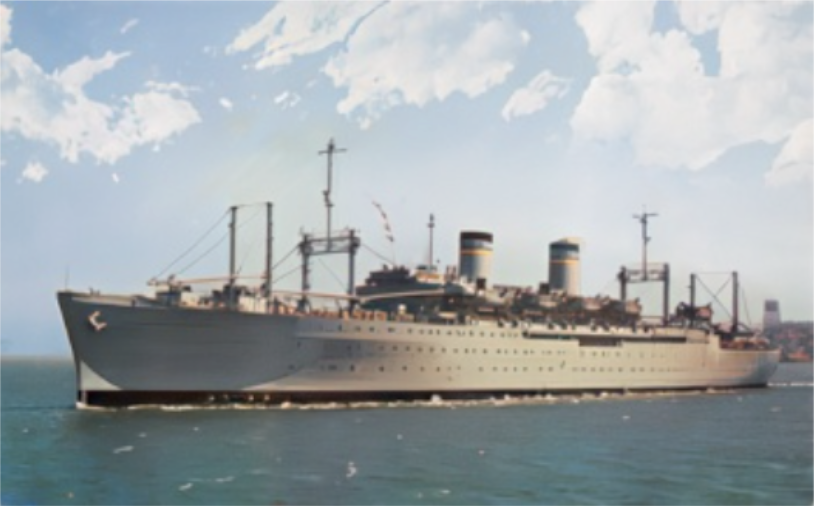
USNS General Edwin D. Patrick TAP 124 – June 26, 1962, to July 10, 1962: Introduced to the game of double-deck pinochle, assigned regular daily duty to the chaplain’s office because of my typing skills. We landed in Hawaii on June 30, 1962, and left 24 hours later.
The stop in Honolulu was very memorable. I made contact with the Lenchanko family, who had befriended my father in 1957 when he worked in Hawaii. A lifelong relationship began that still holds strong today.
Next stop: HedSupAct, Yokosuka, Japan. I arrived on July 10, 1962, for transportation to the USS Salisbury Sound AV-13. I witnessed a crime while on fire watch in the barracks on July 11, 1962, and was retained at Yokosuka, Japan, as a witness in a court martial until September 19, 1962, when I continued my journey to the USS Salisbury Sound.
I was assigned as a Personnelman striker in the Receiving Unit. I volunteered to obtain a Japanese and Military driver’s license, and also operated a Gedunk Wagon for the Navy Exchange at the Naval Shipyard, Yokosuka, Japan. I met a Japanese national named Mr. Murikami, who showed me around the area.
PNSN Michael Andrew Orr, assigned to the Receiving Unit, became a close friend. We both had similar backgrounds and were reunited at EPDOPAC in San Diego in 1964, maintaining constant contact throughout our careers.
The court-martial events ended, and I joined the USS Salisbury Sound AV-13 at White Beach, Okinawa. I took instructions and passed tests to operate a “cherry picker” crane and a semi-truck and trailer, which became useful skills in the future.
Finally, I reported to the USS Salisbury Sound AV-13.

Upon reporting, I was assigned to X Division because of my typing skills. Starting off in the ESO office, I met people from every rating and rate group on board, and I found shipboard life exciting. I volunteered to be the 1JV phone talker on the bridge and got certified for underway replenishment, seaplane ops, and many other duties. I frequently volunteered to drive the special services vehicle at White Beach and in various ports of call. I also flew on surveillance missions in P-5 Marlin aircraft with the patrol squadrons we supported.
Interestingly, my two most memorable persons were the Navigator and the Executive Officer. When I was transferred to the personnel office, there was frequent interaction with the XO. The aviators on the USS Salisbury Sound needed regular flight hours, and I volunteered to sit as the radio operator, especially for proficiency flights in local station aircraft like the C-117.
Memorable events:
- Married Nieves B. Carlos in Reno, NV, on August 4, 1963, just before the ship deployed for a six-month cruise. She was a Philippine National.
- Met father-in-law and brother of wife in Makati, Philippines, for the first time during a one-week port call.
- President John F. Kennedy was assassinated while the ship was in the South Pacific off Singapore.

- Participated in the relief of Kodiak Island after the deadly Good Friday Earthquake in 1964. Helped load aircraft with supplies. Almost missed my Catholic Church Wedding scheduled for April 4, 1964.
- Went on honeymoon on 30 days leave. The leave was courtesy of the U.S. Navy. The expense of the airfare was a wedding gift from my new father-in-law. My wife became pregnant with our first child.
- Promoted to PN3 and became eligible for Shore Duty.
June 15, 1964: Transferred to the Enlisted Personnel Distribution Office, Pacific (EPDOPAC) at Naval Air Station North Island, San Diego, CA. Reported for duty on June 26, 1964.
I volunteered to work nights because that allowed me to attend classes at San Diego State College during the day. That experience set the direction of my career due to my adventuresome attitude.
I was reunited with Michael Orr in 1964 at EPDOPAC. Other memorable people who would influence my life included LCDR James Basil Williams and PN1 Alto McCarthy.
Most memorable events:
- Birth of 1st daughter, Michelle, January 4, 1965.
- Promoted to PN2. Reenlisted for 6 years.
- Learned how to scuba dive.
- Applied for the integration program.
- Part-time jobs: taxi driver, bartender, waiter, short-order cook.
- Diving instructor.
- Birth of 2nd daughter, Marie-Inez, September 10, 1966.
Volunteered for duty in Vietnam and was transferred on December 30, 1966.
Reported to COMRIVFLOTONE for duty on January 2, 1967.
Attended SERE School before transport to RVN.

Assigned as duties of rate: PN2. Flotilla flagship, located in Vung Tau, Special Rung Sat Zone. USS Henrico APA-45. Stood JTOC radio operator watches as an additional duty. Took R&R. Upon return, discovered Flotilla had relocated to Dong Tam Base in the Mekong Delta.
Came under enemy fire from mortars on an irregular basis. Assigned additional duty as convoy leader for troop transports from Dong Tam to Saigon, RVN.
Transferred: January 29, 1968. Reported to HEDSUPACT Saigon, FFT to CONUS on January 30, 1968. The TET 1968 offensive commenced shortly after takeoff from Saigon. Destination: Navy Schools Command at Naval Station San Diego, to attend Navy Scuba Diving School.
Reported to Service School Command Annex, 32nd Street Naval Station, San Diego, CA, to attend U.S. Navy Diving School, Scuba – NEC 5345. Graduated: March 22, 1968.
Reported to Naval Station, Sangley Point, Republic of the Philippines on March 30, 1968.
I ended up in the Riverine Force in the Mekong Delta for a full 13-month tour. Because of the things I volunteered for there, I was accepted to the Navy Diving School and assigned to several commands as a Navy Scuba Diver instead of as a Personnelman.
From the USS Salisbury Sound to the USS Kitty Hawk, I was somewhat of a maverick, ending up in positions and places where a normal, career-minded Personnelman was not supposed to be. Influenced by my father, I had always wanted to be a Navy Diver. I can best describe my Navy Career and its direction: “I did not have to grow up, and I got to play with all the toys.”
It took me about 1 and 1/2 years to finally make SN (only because I did not take the test). After that, my path of advancement to E-9 seemed rapid and fun.
If you participated in any military operations, including combat, humanitarian and peacekeeping operations, please describe those which made a lasting impact on you and, if life-changing, in what way?
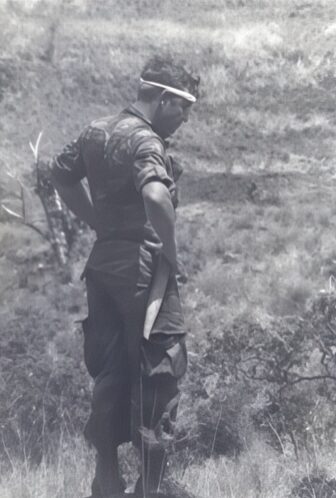
Participation in combat operations was not an assigned task. In Vietnam, as a vehicle convoy leader, we were shot at and returned fire on multiple occasions. Then — there was 3 tube Charly lobbing in harassing fire at night onto the Dong Tam base. He wiped out the chow hall and EM club several times — both of which were only 50 feet or so from our hootch.
When in the Philippines, we were running supply convoys between Naval Station Sangley Point and Clark AFB. It was not unusual to come under fire, but it was not serious combat — kind of a harassing thing.
The biggest single, life-changing event was my job at Dong Tam. I was responsible for identifying casualties for a force of 880 people and sending off the casualty lists. I had to visit the wounded in the field hospital and arrange all their personal effects before they were shipped out to Saigon.
Over the years, I would find myself in that position. In the Philippines, I had to recover the body of a sports scuba diver from 138 feet in a Philippine fish trap. It seems that I was exposed to shipmate death more than the average person, which impacted how I thought about things and how I grabbed a hold of life and lived it to its fullest. I am not aware that those experiences changed me in a negative way, although there are those who say three marriages — all after Vietnam — and an over-fondness for alcohol are symptoms of PTSD.
I think the biggest life-changing event for me did not occur until I was about 60 years old when I finally had to admit and face up to the fact that because “I did not grow up and because I played with all the toys,” I was not there for my three daughters while they were growing up.
Of all your duty stations or assignments, which one do you have fondest memories of and why? Which was your least favorite?

This is hard because I do not recall any single duty station from 1961 to 1980 that was my least favorite.
I actually have two duty stations of which I have very fond memories because they involved different types of duties that I enjoyed immensely.
In September 1970, I was assigned from Naval Station Sangley Point to Fasotragrupac SERE School as a BM1 – Scuba Diver. That is not to say that I changed my rate from PN1, only that I was distributed to the school to fill a BM1 diving billet. During that tour of duty, I became a Navy Instructor, SERE Instructor, qualified parachutist, and qualified aircrewman in HH3A helicopters. I developed a combat search and rescue curriculum and established the COMNAVAIRPAC Combat Search and Rescue Training Program at Fallon, NV. As the diving officer for SERE, I was also assigned collateral duty as the diving officer for NAS North Island. This did not mean much as scuba divers were somewhat limited to pier surveys, finding equipment lost over the side, getting lines out of boat screws, etc. The heavy-duty diving was performed by the 2nd Class Diving School cadre at Naval Station San Diego at 32nd Street. As a combat SAR instructor I led aggressor forces in search of “downed” pilots in daytime and nighttime training scenarios that coordinated Air Force, Marine, and Navy forces. I traveled to the Philippines to set up a similar program for the JEST school at Cubi Point. I had fun — that’s all I can say.
In February 1975, I had made E-8, and someone decided it was time for me to return to the fleet as a Personnelman. I was assigned to the USS KITTY HAWK CV-63. I had met YNCS Frank Cavanaugh at NAS North Island, and he was also assigned to the Kitty Hawk from shore duty to arrive a few months after I got on board. My tenure on the KITTY HAWK was mighty eventful. I started off as the Educational Services Officer and soon found that I needed more challenges. Our helo squadron came aboard short a bunch of 1st crewmen, so I was allowed to take on some daily flight duties — mail runs to the small boys, starboard deltas during takeoffs and landings — that sort of thing. Because the ship did not have flight pay for me, the squadron commander more than made up for the help by making sure that I had transportation on “training” flights when the ship was in port. What a blast.
I also worked as the layout editor for the 1975 cruise book. I cadged a two-week school in Hawaii while the ship was on RIMPAC. In August 1975, I was assigned as the Personnel Officer — that kind of stopped my flying activities. In March 1976, Kitty Hawk changed homeport to Bremerton, WA, for an overhaul. I was given the job of validating a new document called a Ship’s Manpower Document. This was a first for this ship. I dug my heels in and received acclaim for the manner in which I did the work and was rewarded with a re-assignment to the next carrier that was going into overhaul. During my tenure on Kitty Hawk, I was a charter member of a very unique group — an informal command consensus group that consisted of myself, Frank Cavanaugh, the Supply Officer, the Chief Engineer, and the XO. For the 13-month overhaul period, there was nothing that happened on that ship that we did not know about, and we were able to solve many, many problems before the problem could escalate into trouble — including a riot in the mess decks just before getting underway back to San Diego in 1977.
As you can see from this, those two commands were very exciting for me, and I have all kinds of sea stories from each. Which one was the better? I don’t know. I can only say that the work I did on the Kitty Hawk SMD eventually led me to an independent duty assignment at Bremerton, WA, under the auspices of the Chief of Naval Operations.
From your entire military service, describe any memories you still reflect back on to this day.

I had a number of very memorable events in my Navy Career.
Naval Station Sangley Point, Philippines – the loss of Lcpl Danny Youngblood, USMC, in a scuba diving accident.
FASOTRAGRUPAC (SERE INSTRUCTOR): My first “traps” and “shots” onto and off an aircraft carrier.
USS KITTY HAWK CV-63: Flying as an aircrewman in helicopters while on deployment.
What professional achievements are you most proud of from your military career?

I never knew I was being written up for medals or awards. Probably the most important ones were the Navy Commendation Medal, the Navy Achievement Medal (2 awards), the Combat Action Ribbon, and the Expert Rifle and Pistol Medals, which were the most significant of my career.
I was written up for the first Navy Achievement Medal by LCDR John D. Morris. I was able to meet with him after I had been awarded the medal with the combat “V”. He said he submitted the paperwork for my medal because of all the work that I did trying to ensure that all the enlisted personnel in the FLOTILLA (COMRIVFLOT ONE) had the opportunity to take advancement exams, the daily diary reporting, and my duties to identify casualties and attend the casualties in the local MASH hospital. We had 884 people in the flotilla for whom I was responsible. The combat “V” was recommended because of the intermittent nightly fire from “3 tube Charly” and my services as a convoy leader between Saigon and Dong Tam, Vietnam.
The second award (Navy Achievement Medal) was awarded for the work that I did associated with the Ship Manpower Document (SMD) program for aircraft carriers.
The Navy Commendation Medal was awarded for the SMD program I developed and finalized for aircraft carriers. It was awarded on the occasion of my retirement in February 1980. I felt accomplished when I learned of the awards — in each case.
Of all the medals, awards, formal presentations and qualification badges you received, or other memorabilia, which one is the most meaningful to you and why?
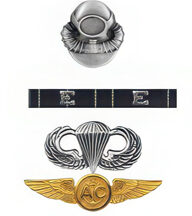
The most significant badges I was awarded are the Scuba Diver badge, Air Crewman badge, and Basic Parachutist designations.
These designations and approvals to wear the resultant badges were important to me because they represented educational and practical application achievements. In each case, I had to achieve academic goals and physical goals and compete with others to meet Navy Standards.
The Navy Expert Rifle and Expert Pistol medals with an expert designation had to be earned over a three-consecutive-year period. These awards and designations were measurable standards against my personal abilities, and I felt a sense of accomplishment when I met the standards established by my peers.
Which individual(s) from your time in the military stand out as having the most positive impact on you and why?

There is no doubt in my military mind that BM1 Kirby, my boot camp commander, had an everlasting impact on my thoughts, actions, and reflections on my Navy Career. His advice (often given after duty hours) was especially valuable to me from the onset of my time in the Navy.
Michael Anthony Orr, PN3 (at HEDSUPPACT Yokuska, Japan), had a huge impact on my acceptance of Navy Discipline. Like me, he was a former Catholic Seminarian, and we were like kindred souls, although he was much more mature. I would be assigned with him at EPDOPAC in San Diego, California, several years later, and he taught me integrity, loyalty and perseverance. My career (advancement-wise) would parallel his over the years.
CDR Russ McJunkin from my SERE Instructor days taught me what Naval Officers and Leadership were all about. Because of my relatively rapid advancement, I tended to be arrogant and brusque with juniors. Through his example and attention, I learned to see the good in people and understand leadership in a more meaningful way.
YNCS Frank Cavanaugh and CAPT Al Newman taught me to stop taking myself so seriously and be patient. They also taught me not to jump to conclusions too quickly, which made me a better leader.
Can you recount a particular incident from your service which may or may not have been funny at the time but still makes you laugh?

There were many of these, but one of the most notable was just after I had reported onboard the USS KITTY HAWK CV-63 in March 1975.
I was new to the Kitty Hawk and still getting my “feet on the ground” as the Educational Services Officer (ESO) (PNCS). I was in the Chief’s Mess for a noon meal when I was approached by an Aviation Mechanic E-8 (ADCS). He came up to my table, where I was eating alone, introduced himself, and started reciting a litany of things that “needed my attention in the ESO office.” I waited until he exhausted himself and asked him, “How many engines do you bring down here to the mess to repair during meal hours?” He responded, “Well – we are all Chiefs and should be willing to help each other.” He said, “You know, Chiefs solve many problems between departments here in the Chief’s Mess.” I looked up at him (he was standing, hovering over my table) and said, “Chief – when you bring an engine down to the mess to work on during meal hours, I’ll talk business – until then, get out of my face. I do not discuss business during meal periods.” He became red in the face and said, “What kind of a chief are you?” I responded with, “Hungry. Go away.” There was a silence in the Chief’s Mess, and then clapping erupted. Apparently, this Chief was in the habit of bringing business to meal hours, and it was greatly resented.
What profession did you follow after your military service, and what are you doing now? If you are currently serving, what is your present occupational specialty?

The day I retired from the Navy, all of my files and work papers for the Shipboard Manpower Requirements Program that I worked on were moved to a civilian Naval Engineering firm where I continued my work in determining manpower for Aircraft Carriers. Several years later, I became an instructor for a firm that specialized in developing and operating maintenance information centers on larger ships. After a heart attack in November 1983, I was hired as a logistics support technician by a firm in Billerica, Massachusetts. I worked on several projects, including the development and purchase of what would become the Patriot Triad Missile System. In 1985, I was lured away by General Electric of Billerica, MA, as a human factors evaluation and logistics support technician for the development of the World Wide Military Communications System. I did a stint managing a roofing company and then worked as a logistics support technician for two firms in the San Francisco Bay Area. From 1987 through 1990, I was engaged by various firms as a Logistics Support technician and Functional Systems Analyst for developing software for the logistics support functions of the U.S. Navy. Finally, in 1990, I got tired of living from contract to contract and formed my own company. I started out as a Home Inspector, and through education and experience, became a Construction Forensics Analyst working primarily for attorneys and Insurance Companies. I also acquired the knowledge and developed the expertise to write environmental support programs for concrete companies and sand/gravel pit operations. In my last four years before retiring (2013 — 70 years old), I had only three clients, and they kept me busy enough to where my family had a very comfortable life. In 2014, I turned my attention back to my Catholic Faith and have spent most of my time doing volunteer work of one sort or another. At the request of an old client, I took up the mantle of producing the permits and environmental credentials for a new Concrete Batch Plant being installed in Belfair, WA.
In what ways has serving in the military influenced the way you have approached your life and your career? What do you miss most about your time in the service?
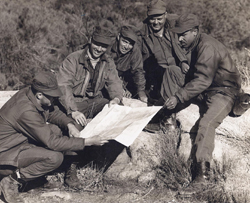
I feel that the previous question regarding what I am doing post-career satisfactorily answers this question. What do you miss most about your time in the service? Nothing.
Based on your own experiences, what advice would you give to those who have recently joined the Navy?
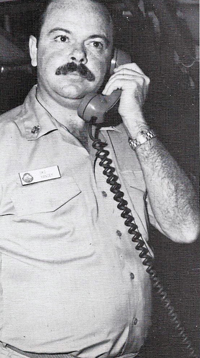
Anyone who served in the U.S. Navy at the same time as I did has no business giving anyone advice on what to do in today’s Navy. The occupational groups have become so specialized and restricted in mobility that individuals are not allowed to develop individual leadership skills without imperiling their careers. The inclusion of certain cultural trends in the Navy has seriously degraded and detracted from the force readiness that was a proud heritage of the “Old Navy.”
The Navy (and other military services) spend too much effort on cultural correctness instead of achieving fleet readiness. Any advice I might give an aspiring military member at this time could well result in that person being discharged for cause.
In what ways has togetherweserved.com helped you remember your military service and the friends you served with.
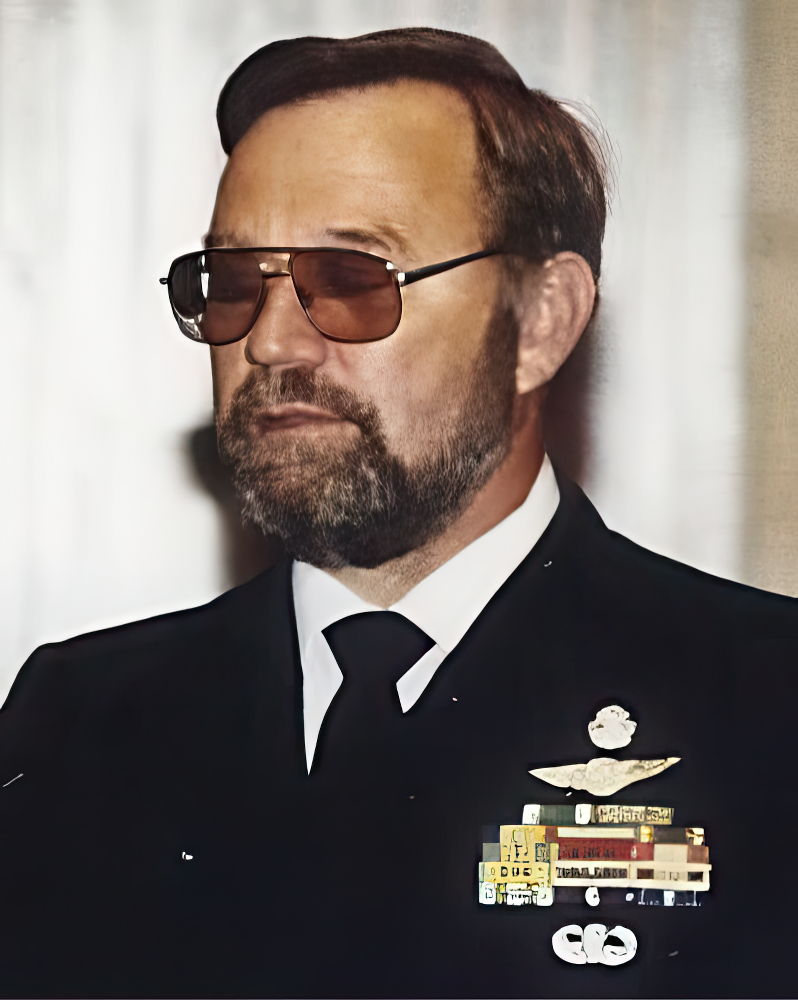
It helped me recall my achievements and how those things impacted my life after the Navy. I have found that any direct contact with anyone I previously served with is largely rebuffed, even if we were good shipmates.
PRESERVE YOUR OWN SERVICE MEMORIES!
Boot Camp, Units, Combat Operations
Join Togetherweserved.com to Create a Legacy of Your Service
U.S. Marine Corps, U.S. Navy, U.S. Air Force, U.S. Army, U.S. Coast Guard
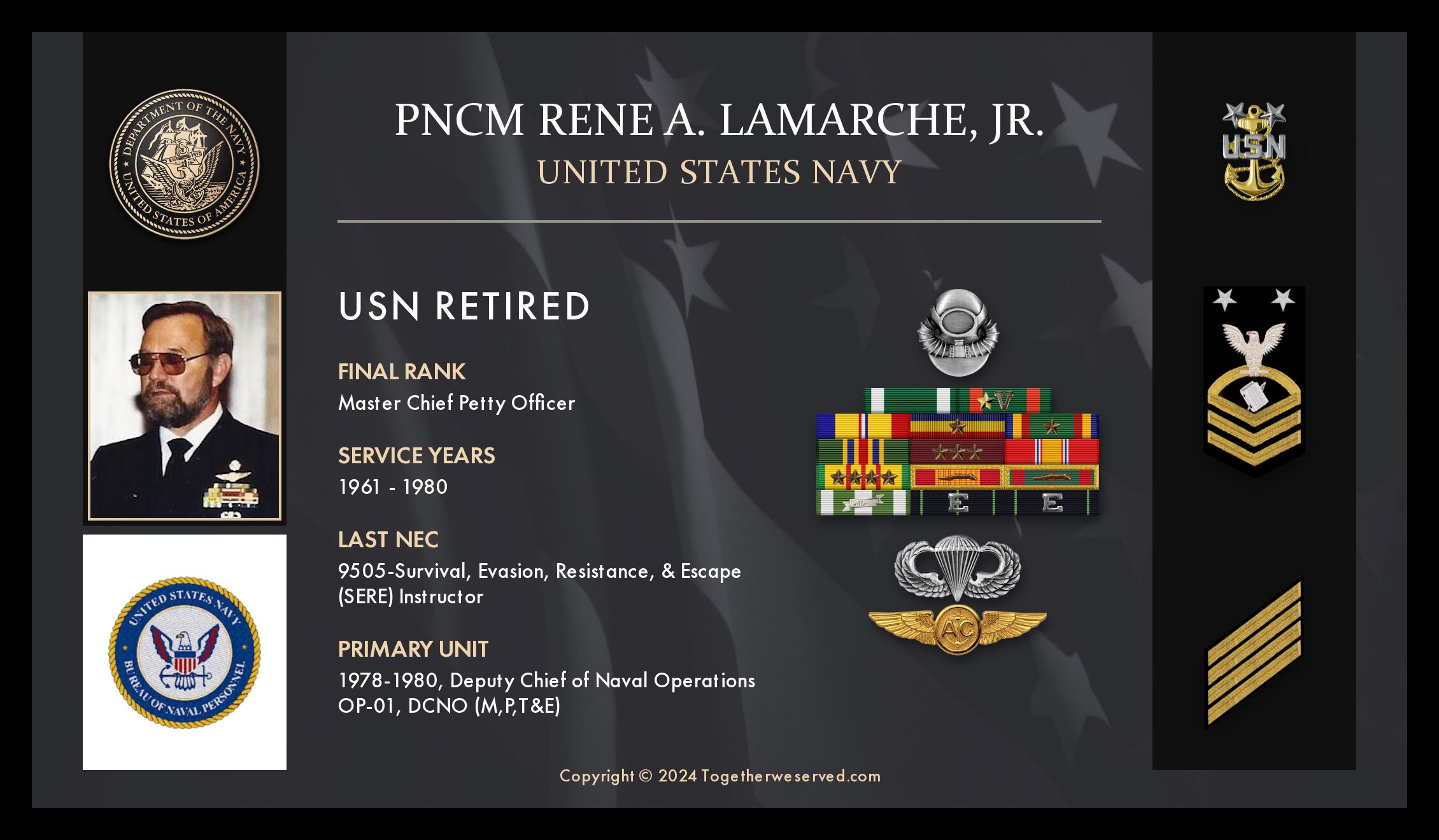
wow! as a fellow vietnam vet air force,sea cadet what have you have not done? i vote fir you as president. i salute you. god bless. my last name is nieves.
I really enjoyed this article.